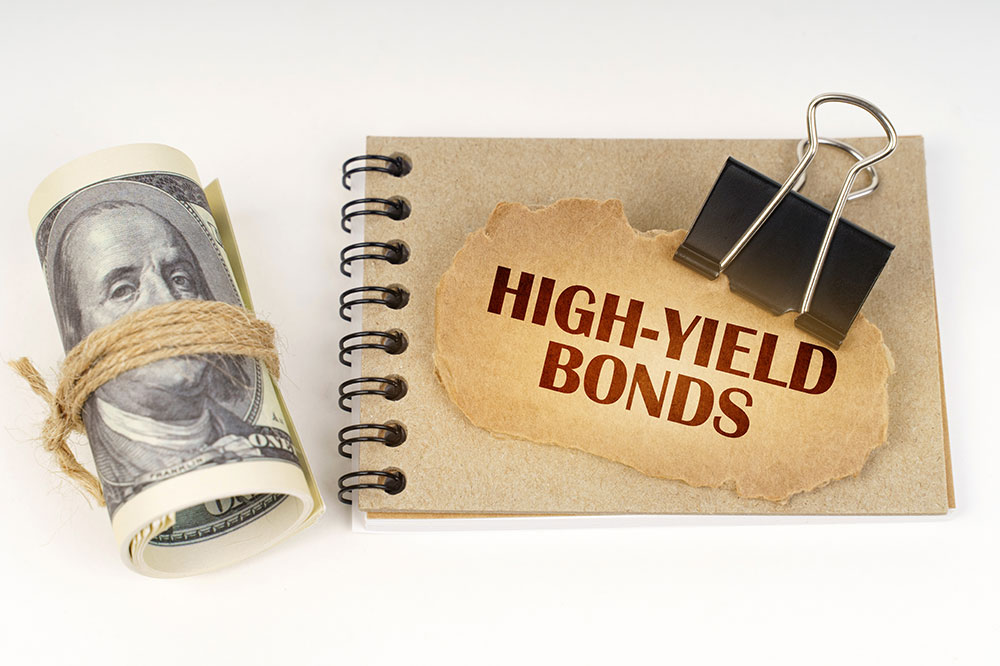
Choosing the best high-yield bonds
If a bond has below Ba3 ratings by Moody’s or below BB by Standard and Poor’s, they are considered a high-yield bond. These companies issue bonds with a higher interest rate than normal to attract investments as they carry a risk of default or failure. Also known as junk bonds, these are not considered investment-grade bonds as they are vulnerable to failure. That said, high-yield bonds may be the best option in certain circumstances.
Benefits of high-yield bonds
An investor may hesitate twice before investing in smaller or newer companies, companies facing financial difficulties, or companies with heavy debts. But the popularity of junk bonds is only increasing because of the multiple benefits it offers to investors, such as:
High-yield bonds are issued in blocks at face value of $1,000 for seven to 10 years.
High-yield bonds are a great way to diversify an investor’s fixed-income portfolio, as they provide a more consistent return than stocks and government-issued bonds.
Junk bonds offer higher income in a shorter duration than investment-grade bonds.
Long term potential of the bond increases if the company’s credit rating improves and the investor can enjoy higher returns and better security than at the time of investment.
An upswing in the economy or a better performance by the company can impact the price of the body and bring in capital appreciation.
High-yield bonds’ major risk is that they are more volatile, and defaults may increase in case of an economic slowdown.
High-yield bond rates
A company and its investment bank fix the terms of a bond and offer it to its investors. High-yield bond rates refer to the annual interest rate the company promises to pay and is fixed at the time of bond issue. Also known as coupon rate, high-yield bond rates remain the same throughout the bond’s life. Coupons are usually paid semiannually. Some companies may issue high-yield bonds at fluctuating rates based on market conditions. In such cases, the issuer can buy back the bonds from the investor if the fluctuating high-yield bond rates benefit the issuer. An investor’s income or return from these bonds is termed yield. Since the coupons are paid regularly, the investor receives the principal once the bond matures.
Top four high-yield bonds
You can invest in a high-yield bond through banks, dealers and brokers. High-yield bonds fall into two categories:
Fallen Angels are bonds that have been downgraded due to poor credit quality and are moving toward junk bond status.
Rising Stars are high-yield bonds whose ratings have increased because of their improving credit quality.
You can also purchase a high-yield exchange-traded fund (ETF) and bond funds, which usually hold multiple individual bonds. While buying high-yield bonds, consider how they can counterbalance your portfolio. You should also consider a company’s credit rating, 3-year, 5-year, and 10-year yield, annual fee, fund size and value of the company’s assets. Look for an expense ratio between 0.5% to 0.75%. The best-performing high-yield bonds of 2023 include the following:
Buffalo High Yield Fund
Eaton Vance High-Income Opportunities Fund
SPDR Portfolio High Yield Bond ETF
iShares ESG Advanced High Yield Corporate Bond ETF
It is critical to research the market and potential conditions thoroughly before investing in high-yield bonds. For example, these bonds are typically hit very hard during any recession period and if there’s a drop in the issuer’s credit rating, the value of the bond can decrease drastically as compared to traditional bonds.




